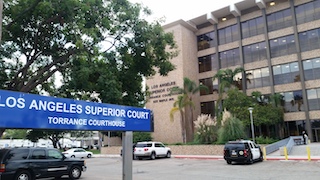The following case summary from a misdemeanor drug possession case in Torrance exemplifies the fact that a docket entry stating that defendant was admonished about the immigration consequences of a plea is often entered in error. Clerks, who work extremely hard under often quite stressful conditions, do make mistakes. They are human.
In the case of our client who was convicted in 2013, when he was just 18, of possession of methamphetamine (Health & Safety Code § 11377(a)) as a misdemeanor, this proved true.
After he was arrested, he was placed in jail for several days awaiting his arraignment. While in jail, he had discussed his case with another inmate who convinced him that hiring an attorney or even using a public defender was stupid. He told our client to just represent himself and plead guilty so he could get out of jail and go home based on time served.
Our client, believing such advice to be smart, did so and asked the judge to let him represent himself. The judge permitted this and our client pleaded no contest to the 11377 charge. He was then placed on three years of informal probation and ordered to pay a $300 court fine, plus penalties and assessments. He was then released from custody and went home.
A few weeks later, he was arrested again for possession of methamphetamine, this time as a felony, and his probation in the first case was revoked.
 Torrance Courthouse
Torrance Courthouse
The judge in Torrance, correctly sensing our client was addicted to methamphetamine, kindly referred the client to drug treatment under Proposition 36 for both cases and our client completed Prop 36. In entering Prop 36, the client used a public defender, who never discussed the immigration consequences of Prop 36 because it was a felony drug charge.
At the time the client navigated these two cases, he was not a U.S. citizen. He had come to the United States at age two on a visitor visa, but it had expired. Nonetheless, he did not regard the immigration warnings as applying to him because he thought he could not be deported since he had lived in the United States for sixteen years. He also had observed the judge giving such warnings to people to whom it obviously did not apply. Our client believed the script the judge read to each person entering a plea was mandatory to be read, even if it did not apply.
Over the next eight years since his two cases, both in Torrance, our client got married and had two kids. He worked as a mechanic and his wife was studying to become a nurse.
One day, he applied to become a U.S. citizen and was told he was barred because of these two cases, which were dismissed upon his successful completion of Proposition 36, but were nonetheless considered convictions under federal immigration law.
The client went to an immigration attorney to ask if there was anything he could do. The immigration attorney referred the client to Greg Hill & Associates.
The client then called Greg Hill & Associates and spoke with Greg. He described the facts of the case and his current situation in life. Greg then went to the courthouse and got the docket on the case and then discussed a motion to vacate a conviction under Penal Code § 1473.7(a)(1).
The client then retained Greg Hill & Associates and our office then prepared, filed and served the motion to vacate for the first 11377 case (the misdemeanor).
The Torrance City Prosecutor had never seen such a motion and believed it was a motion to set aside a plea under Penal Code § 1016 for failure to warn the client of the immigration consequences of a plea. Greg discussed this with her and explained that even if such warnings are given by the judge, such warning do not substitute for advice of counsel, which our client’s motion addressed in the motion. If fact, even an admonition by the judge, which did not happen here, that deportation “will result” is not a categorical bar to relief.
People v. Camacho (2019) 32 Cal. App. 5th 998, 1011, fn. 8. Nor is the
Tahl form’s language.
Nonetheless, the prosecutor insisted upon getting the transcript from sentencing. About two weeks later, she received the transcript from the court reporter. It did not contain any warning to the client about the immigration consequences (although the docket stated it was given).
The prosecutor then agreed to vacate the plea, which the judge then ordered. The client was very happy with this.
We offer this summary to show how a prosecutor often does not understand the law and it is prudent not to point this out too strongly to him or her. Rather, the savvy way to handle it is to wait until such a misperception seems to be a problem because the judge shares such a misperception or is persuaded by the wrong legal understanding. Here, that point was never reached and the result is what mattered, so Greg never reached that potentially volatile situation where he had to illuminate the prosecutor’s misunderstanding, embarrassing her. It was avoided entirely and our client got the result needed, which is what mattered most.
For more information about a motion to vacate a conviction under Penal Code § 1473.7(a)(1), please click on the following articles:
 Torrance Courthouse
Torrance Courthouse